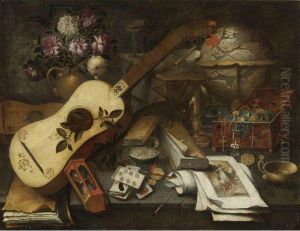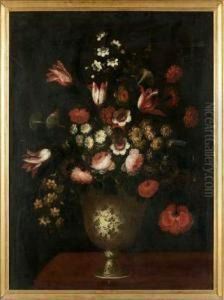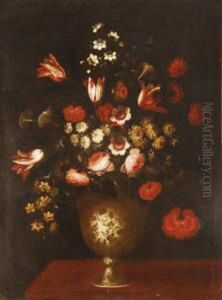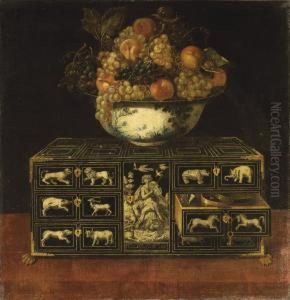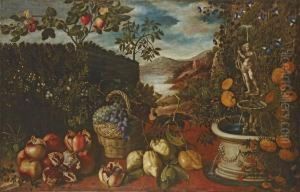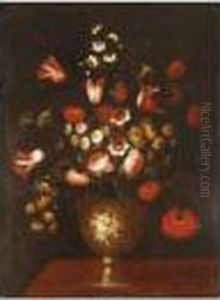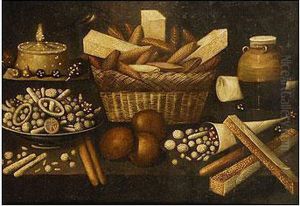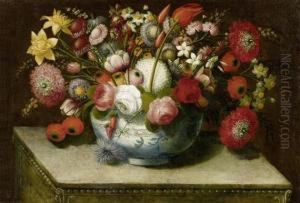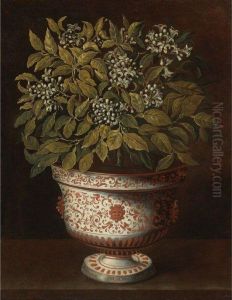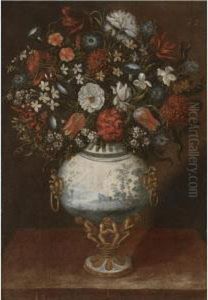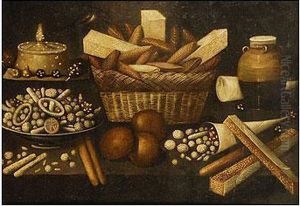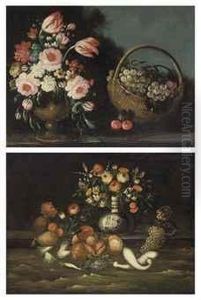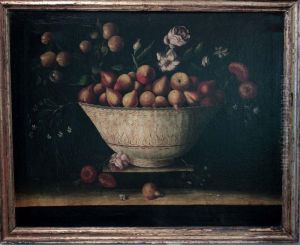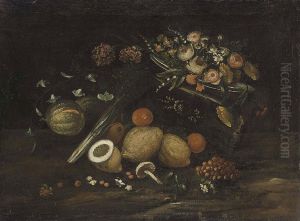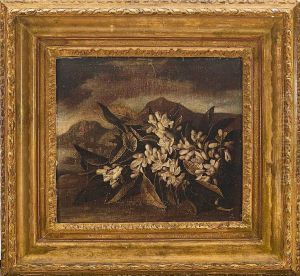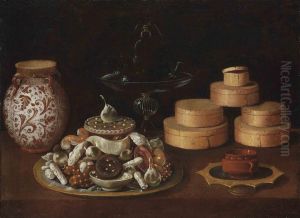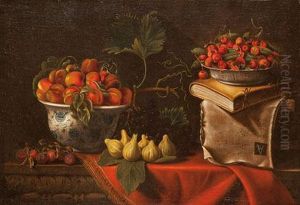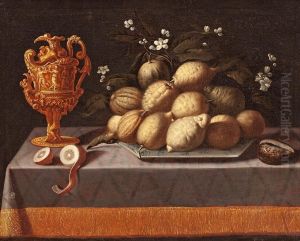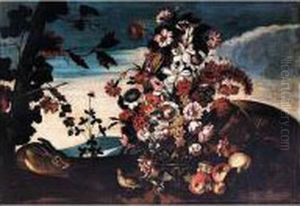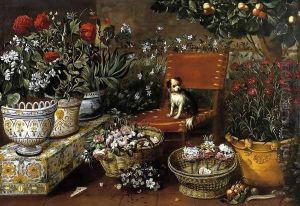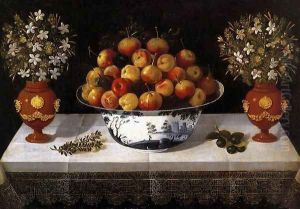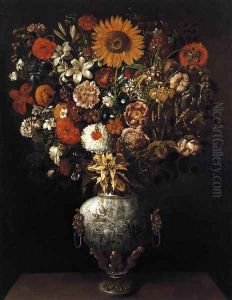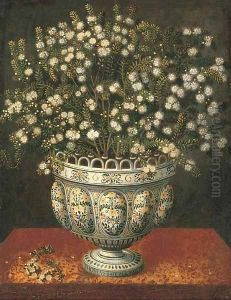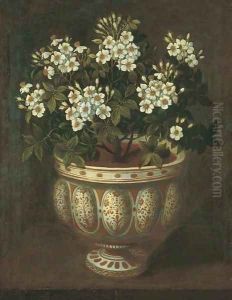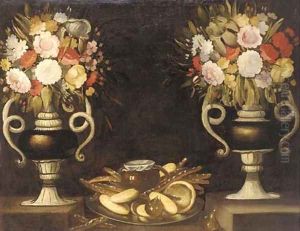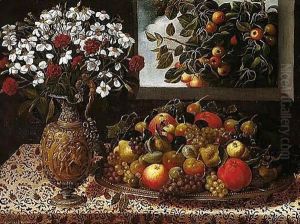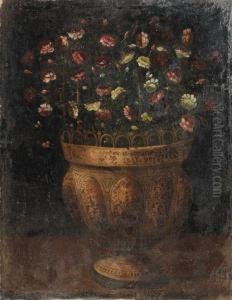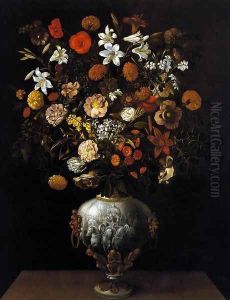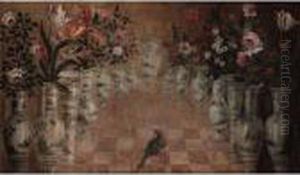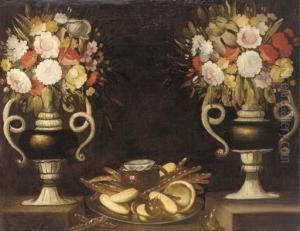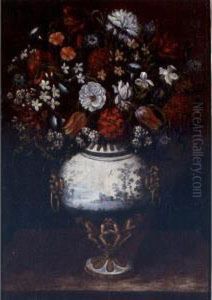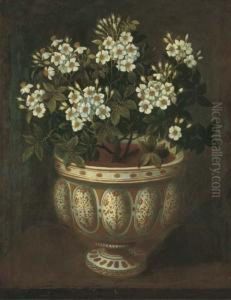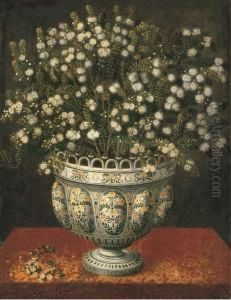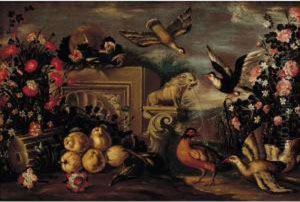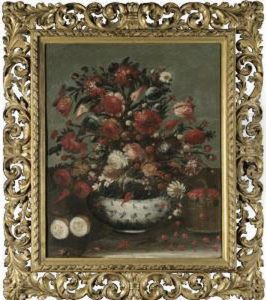Tomas Hiepes Paintings
Tomás Hiepes, sometimes spelled Tomás Yepes, was a Spanish painter born in Valencia in 1610. He is primarily recognized for his still life paintings, which are characterized by their detailed depictions of fruits, flowers, and kitchenware, often arranged on stone ledges against a dark background. Hiepes was part of the Spanish Baroque period, which was known for its rich visual effects and dramatic use of light and shadow, known as chiaroscuro.
His work shows influence from the bodegón genre, a style of still life painting that often included kitchen items, food, and drink, prevalent in Spain during the 17th century. Hiepes’ paintings stand out for their vibrant colors and the meticulous attention he paid to textures and surfaces, from the sheen of metallic objects to the translucency of glassware and the tactile quality of fruit and flower petals.
Apart from still lifes, Hiepes occasionally painted religious subjects and flower garlands, which were sometimes used as frames for devotional images. However, it is for his still lifes that he is most remembered, and he is considered one of the leading figures in the development of the genre in Spain.
Little is known about his training and early career, but it is believed that he may have been self-taught or apprenticed to a lesser-known artist. His work gained recognition in his hometown of Valencia, and he received commissions from prominent local figures, including members of the clergy and the Valencian aristocracy. Hiepes enjoyed a successful career and his paintings can be found in various museums and private collections around the world.
Tomás Hiepes' contributions to the still life genre were significant in establishing a Spanish identity within the European art scene of the time. Despite the lack of extensive documentation on his life, his surviving works provide valuable insight into the aesthetics and cultural interests of 17th century Spain. He passed away in Valencia in 1674, leaving behind a legacy that continues to be appreciated by art historians and collectors alike.
